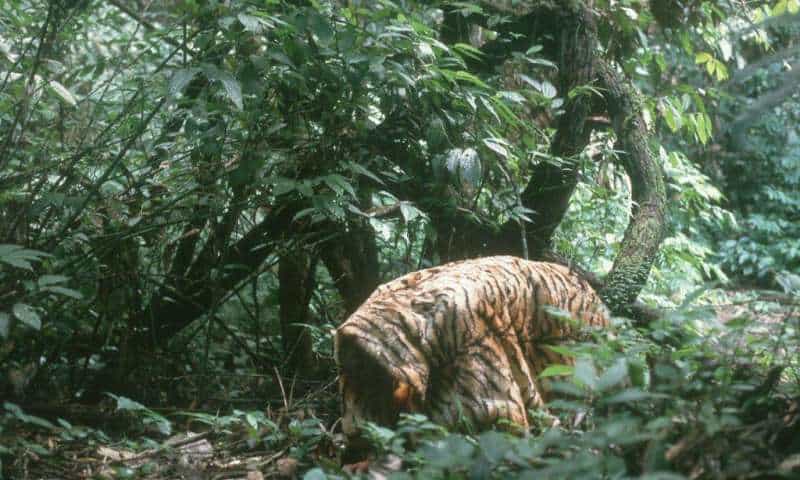Orangutans seem to be able to transmit information about a past or future event, a new study concludes.

They say goldfish can only remember three seconds — but orangutans definitely don’t share this limitation. A new study reports that these primates can transmit information about events in the past, an ability that was thought to be virtually exclusive to humans.
Watch out… seven minutes ago!
When danger lurks about, orangutans issue a specific alarm call. It probably wouldn’t sound particularly distressing for us hairless apes: it’s quite similar to what you’d recognize as a kissing noise. From what we know so far, orangutans will produce this sound to warn the group. However, there’s also debate regarding exactly how they use it — such a signal would also inform any predators that they’ve been spotted, which may determine it to make a hail-mary assault on any exposed group members.
So the team set out to investigate whether such alarm calls involved ‘displaced reference’ — i.e. if they can be issued for threats in the past or future, not the present. They did so by scaring a group of orangutans in the Ketambe forest, Sumatra, with colorful sheets.
These coverings were either white, spotted, patterned (for example with a tiger-stripe pattern). The researchers (quite hilariously, I imagine) donned the sheets and then bumped around the forest floor for two minutes, making sure orangutan mothers perched in the trees above could see them.

Image credits Adriano R. Lameira.
Half of these staged stalkings elicited a kiss vocalization, the team reports — the tiger-stripe cover being the most successful.
Only one of the vocalizations occurred when the faux predator was still visible. All others were delayed (for an average of 7 minutes) until the simulated predator left. One particularly old female orangutan delayed this warning by roughly 20 minutes, the researchers add. Once she started, however, “she called for more than an hour,” Adriano Reis e Lameira, one of the researchers, explained to Science Magazine.
“She stopped what she was doing, grabbed her infant, defecated [a sign of distress], and started slowly climbing higher in the tree,” he says. “She was completely quiet.”
“Twenty minutes passed. And then she finally did it.”
The team thinks this isn’t a case of the orangutans being overcome with fear and thus failing to sound the alarm while the predator was prowling. Instead, they believe the mothers might have been waiting to protect their child.
“Vocal delay was also a function of perceived danger for another – an infant – suggesting high-order cognition,” the study reads. “Our findings suggest that displaced reference in language is likely to have originally piggybacked on akin behaviours in an ancestral hominid.”
The findings are quite exciting as they suggest that humanity’s ability to understand and communicate information regarding past (or future) events may be directly rooted in our ancestors — most likely in a common ancestor between humans and orangutans.
This is far from a definitive conclusion, however, and further research will be needed to fully confirm the findings. But orangutans have proven themselves to be quite intelligent animals, so personally, I wouldn’t put displaced reference beyond them.
The paper “Time-space–displaced responses in the orangutan vocal system” has been published in the journal Science Advances.
Was this helpful?



